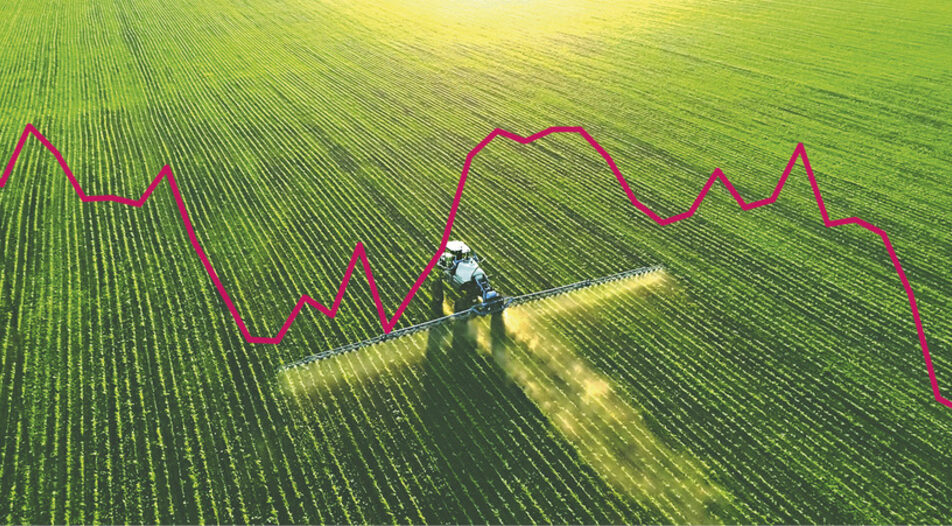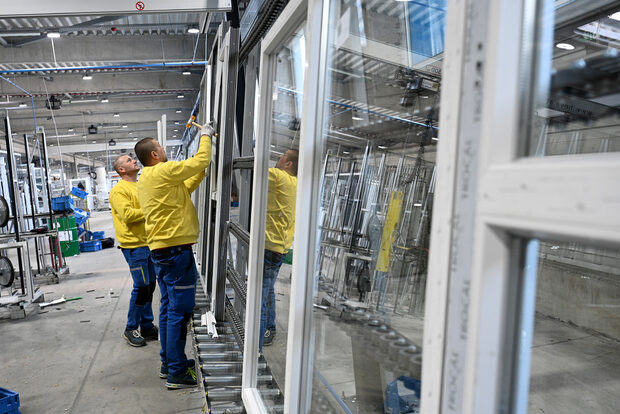- A small number of countries produce a large share of internationally traded fertilizers, making the sector vulnerable to trade shocks
- Major fertilizer importers that are facing shortages of supply from Russia and Belarus have been able to secure deliveries from alternative sources
- In times of high prices, farmers tend to prefer nitrogen, which is why there has been a sharper decline in global demand for potash and phosphate fertilizers
Russia's invasion of Ukraine in 2022 caused a global disruption in key agricultural produce and fertilizer markets, threatening food security worldwide. As the war entered its third year, high international food prices declined, although domestic price levels remained high in many low- and middle-income countries.
The good news is that fertilizer prices, while still high, have fallen significantly from the peak levels of 2022. As with global trade in agricultural commodities and food, this rise and fall is a complex mix of changing supply and trade linkages.
At the start of the Russian invasion, fertilizer prices were already at historically high levels. They have been rising since late 2020 due to several factors. Fertilizer demand, which had declined during the lockdowns prompted by the Covid-19 pandemic, recovered in 2020-2021 when travel restrictions were lifted and commodity prices rose. On the supply side, increases in the prices of natural gas and coal - major raw materials and energy sources in fertilizer production, as well as some reductions in production capacity, also put upward pressure on prices.
Concentration of production
The outbreak of the war on 24 February 2022 then led to a sharp increase in prices. Uncertainty about fertilizer exports from Russia and Belarus increased over new or extended economic sanctions against both countries and the disruption of trade routes in the Black Sea. Russia and Belarus are important producers of all three major fertilizer nutrients: in 2020, Russia accounts for 14% of world urea trade and 11% of phosphate trade, and Russia and Belarus together account for 41% of world potash trade. The fact that a small number of countries produce a large share of internationally traded fertilizers makes the sector vulnerable to trade shocks.
Countries heavily dependent on fertilizer imports from Russia and Belarus feared immediate shortages and many had to scramble to secure alternative sources from a much-shrinking world market. With about three-quarters of all countries importing at least half of their fertilizer consumption, however, trade stalled.
Sanctions imposed by the EU, the United States, Canada and other countries on Russia and Belarus after the invasion formally excluded agricultural products (EU sanctions prohibit potash imports from Belarus and shipments through EU territory to other markets). Despite the exemptions for agricultural products, the sanctions seem to have reduced fertilizer trade in some regions, as importers may choose not to buy from these two countries due to the additional costs of doing business with them, such as more restrictive banking regulations, higher insurance costs, or for fear of falling into the financial sanctions trap.
According to an analysis by the International Food Policy Research Institute (IFPRI), potash exports from Belarus in 2022 were at least 50% lower than in 2021 due to sanctions and restrictions on using EU territory for transit. Although total urea and potash exports from Russia declined in January-August 2022 compared to the same period in 2021, they recovered during the rest of the year. The shutdown of the Togliattiazot pipeline carrying ammonia to the Ukrainian Black Sea port of Odessa contributed to a 63% slump in Russian ammonia exports in January-August compared to 2021.

Export restrictions
Disruptions in global markets have also triggered various types of export restrictions imposed by some countries wishing to keep domestically produced fertilizers available for home use. These included total bans or onerous inspection and licensing procedures. In June 2022, IFPRI estimated that about 20% of world fertilizer trade was affected by such restrictions.
In particular, fertilizer exports from China have declined sharply after the country restricted exports from mid-2021. Diammonium phosphate (DAP) exports from China, which typically account for 30% of global DAP trade, fell by 43% in 2022 compared to 2021, while urea exports from China declined by 47% over the same period.
Major fertilizer importers facing shortages of supply from Russia and Belarus have been able to secure deliveries from alternative sources. For example, Brazil, the second largest importer of potash, has increased imports from Canada to offset the decline from Belarus. Morocco, the world's fourth largest importer of ammonia, increased imports from Saudi Arabia and Egypt to make up for shortfalls from Russia. At the same time, production capacity in some regions increased along with exports - notably of potash from Canada and phosphate from Morocco, and urea from Nigeria. Russian fertilizer exports to some markets, such as India, have also increased significantly.
However, some smaller low-income countries in sub-Saharan Africa found it much more difficult to secure fertilizers as they have faced availability problems since the invasion.
Effects on agriculture
Assessing the impact of the fertilizer crisis and the reduced demand on crop yields is a complex process, especially in regions of the world with large numbers of smallholder farmers. The impact on yields varies not only according to the quantities used, but also to changes in fertilizer choices. In times of high prices, farmers tend to prefer nitrogen, which is why there has been a sharper decline in demand for potassium and phosphorus fertilizers worldwide. The impact of reduced nitrogen use on yields can be seen within the same growing season, while the impact of saving potassium and phosphorus fertilizers on yields, but also on soil health, can become apparent after several years, IFPRI notes.
Nor is it easy to assess the impact of reduced fertilizer use on food security. Many factors affect production: events such as droughts and floods or large post-harvest food losses can lead to reduced productivity, even if sufficient fertilizer is used. Fertilizers are also used for the production of non-food crops, especially biofuels. Global biofuel production is still increasing, albeit at a lower rate since 2020, and generally still relies on food crop feedstocks rather than modern non-food crop feedstocks. For example, almost 38% of the US corn crop is used as feedstock for biofuels, and globally vegetable oils are expected to account for around 23% of biofuel feedstocks by 2027.
What follows from high prices
High prices have reduced demand from farms, pushing prices off their peak in 2022. But after two consecutive years of decline by an overall 7%, the International Fertilizer Association (IFA) forecasts a 3% increase in global fertilizer demand in 2023.
In June, ratings agency Fitch lowered its near-term price forecasts for ammonia, urea and potash due to the depreciation of natural gas, a key raw material for production, and the fall in prices since the start of the 2023.
Moreover, the addition of 1.3 million tonnes of commercial capacity in the second half of 2023, once the Gulf Coast Ammonia facility in Texas, US comes on stream, will increase short-term price pressure. Uncertainty about the growth in Russian export volumes from 2024 onwards increases potential pressure on prices, Fitch noted. Prices remain high by historical standards and inflation is high in many countries, leaving the fertilizer sector vulnerable to further shocks from the war in Ukraine or other developments in an uncertain global market environment.
Increasing capacity may ease supply concerns, but greenfield projects require large investments and long lead times to implement, experts note. The launch of new ammonia capacities in the US and the easing of export restrictions by China would also have a significant impact on global markets.
- A small number of countries produce a large share of internationally traded fertilizers, making the sector vulnerable to trade shocks
- Major fertilizer importers that are facing shortages of supply from Russia and Belarus have been able to secure deliveries from alternative sources
- In times of high prices, farmers tend to prefer nitrogen, which is why there has been a sharper decline in global demand for potash and phosphate fertilizers
Russia's invasion of Ukraine in 2022 caused a global disruption in key agricultural produce and fertilizer markets, threatening food security worldwide. As the war entered its third year, high international food prices declined, although domestic price levels remained high in many low- and middle-income countries.












